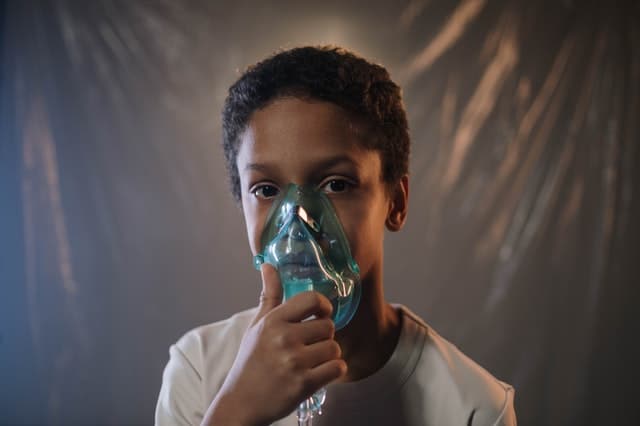What is emergency medical?
How to request emergency medical help? and What is emergency medical? Further help is available from a range of sources. If help is needed, you must decide both on the type of help and how to access it. First, carry out a primary survey to ascertain the severity of the casualty’s condition.
If it is not serious, explain the options and allow him to choose where to go. If a casualty’s condition is serious, seek emergency help. Throughout the website, there are guidelines for choosing the appropriate level of help.
•Take or send the casualty to the hospital.
Choose this option when a casualty needs hospital treatment, but his condition is unlikely to worsen; for example, with a finger injury, You can take him yourself if you can arrange transport – either in your own car or in a taxi.
•Seek medical advice.
Depending on what is available in his area, the casualty should be advised to call his own doctor’s surgery. NHS walk-in center or NHS advice line. He would do this, for example, when he has symptoms such as earache or diarrhea.
•Call 999/112 for emergency help.
If the casualty needs urgent medical attention and should be transported to hospital in an ambulance; for example, when you suspect a heart attack.

Calling for Emergency Medical Help
When calling for help in an emergency Stay calm. Be clear and concise and give as much detail as possible.
TELEPHONING FOR HELP
You can telephone for help from:
•Emergency services, including police, fire, and ambulance services; mine, mountain, cave and fell rescue; and HM Coastguard by calling 999 or 112;
•Utilities, including gas, electricity, or water. The phone number will be in the telephone directory.
•Health services, including doctor, dentist, nurse, midwife, or NHS helplines – this varies in different areas. The phone number will be in the telephone directory; Calls to the emergency services are free from any phone, including mobiles.
On motorways, emergency phones can be found every 1.5 km (1 mile); arrows on marker posts indicate the direction of (and distance to) the nearest phone.
To summon help using these telephones, pick up the receiver and
your call will be answered.
Keep time away from the casualty to a minimum. Ideally, send someone else to make the call and ask him to come back and confirm that help is on the way so that you can stay with the casualty. If you have to leave a casualty to call for help, first take any necessary vital action.
MAKING THE CALL
When you dial 999 or 112, you will be asked which service you require. If there are casualties, ask for the ambulance service; ambulance control will alert other services if required. Your call can be traced if you are unsure of your exact location.
Always stay on the telephone until the ambulance control clears the line; you may be given important information about what to do for the casualty while you wait, and/or asked for further information as the situation develops.
If someone else makes the call, ensure he is aware of the importance of his call and that he reports back to you.
TALKING TO THE EMERGENCY MEDICAL SERVICES
State your name clearly and say that you are acting in your capacity as a first aider. It is essential to provide the following:
•Your telephone number and/or the number you are calling from.
•The exact location of the incident; give a road name or number and postcode, if possible – some street signs include the postcode they are in. It can also be helpful to mention any junctions or other landmarks in the area. If you are on a motorway, say which direction the vehicles were traveling in.
•The type and gravity of the emergency. For example, “Traffic incident, two cars, road blacked, three people trapped.”
•Number, gender, and age of casualties. For example, “One man, early sixties, breathing difficulties, suspected heart attack.”
•Details of any hazards, such as gas, toxic substances, power-line damage, or adverse weather conditions, such as fog or ice.
WHEN THE EMERGENCY SERVICES ARRIVE
Once the emergency services arrive, they will take over the care of the casualty. Tell them what has happened and any treatment given. Hand over any notes you made while attending the casualty. You may be asked to continue helping.
For example, by assisting relatives or friends of the casualty while the paramedics provide emergency care. You should also follow instructions given to you by the medical team.
Remain until you are told you can go since they may need to ask you more questions or the police may want to speak to you.
Help maintain a clean and clean environment and preserve the dignity and confidentiality of those involved. You may be asked to contact a relative. Explain as simply and honestly as you can what has happened and where the casualty has been taken.
Do not be vague or exaggerate, since this may cause unnecessary alarm. It is better to admit ignorance than to give someone misleading information. However, the information you give may cause distress; if so, remain calm and be clear about what they need to do next.

ASSISTING AT THE SCENE
Once the emergency services arrive, tell the team everything that you know. While they assess and treat the casualty, you may be asked to look after or reassure friends.
During Emergency medical help arriving you can and have to stay with casualty or person who injured. so in that situation, you should know how to dealing with them. So here is a guide that you can learn more about What is the first aid treatment for casualty?

